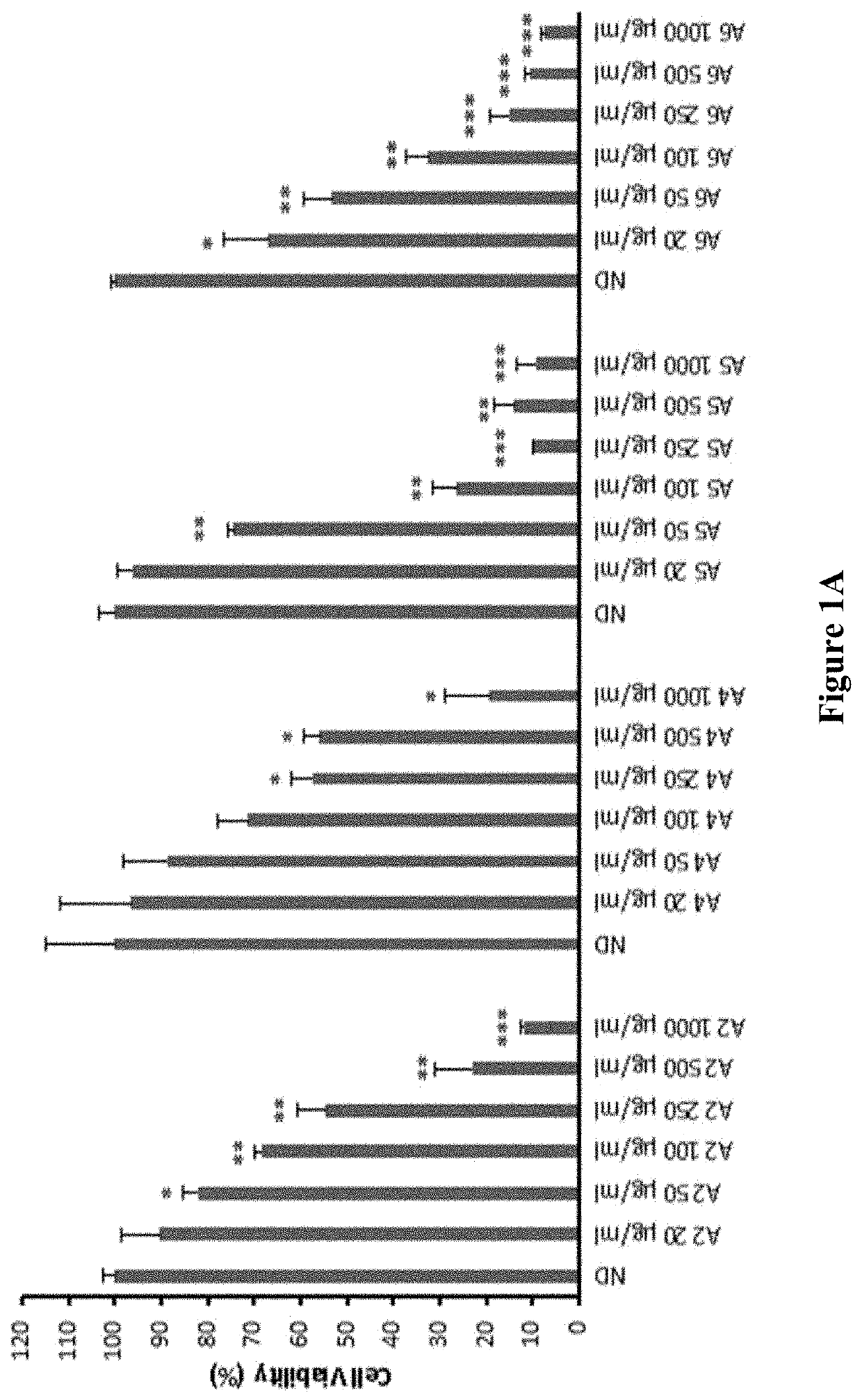Method and composition for inhibiting virus infection
a technology of virus infection and composition, applied in the field of method and composition of inhibiting virus infection, can solve the problems of severely restricting its further application, reducing or blocking subsequent infection, and limited insights into the early infection events of human hbv
- Summary
- Abstract
- Description
- Claims
- Application Information
AI Technical Summary
Benefits of technology
Problems solved by technology
Method used
Image
Examples
example 1 preparation
of an Extract of Antrodia camphorata and its Active Fraction
[0082]100 grams of Antrodia camphorata fruiting body was heat-recirculated with methanol for 6 hours, and the extract was collected and dried under reduced pressure to obtain 15 grams of the Antrodia camphorate methanol extract.
[0083]15 grams of the Antrodia camphorata methanol extract as obtained above was taken, filled with silicon dioxide, and subjected to a gradient elution with the eluant “hexane / ethyl acetate / methanol” in a column separation (3×12 cm) to obtain active fractions, including A2 (Antrodia camphorata extracts), A3 (dehydrosulphurenic acid), A4 (antcin K), A5 (versisponic acid), and A6 (dehydroeburicoic acid).
example 2
Effects of Antrodia camphorata extracts on HBV Infection
2.1 Materials and Methods
2.1.1 HepG2.2.15 cells
[0084]Continuous HBV proliferation can be achieved in HepG2.2.15 cells (RRID:CVCL_L855) stably transfected with the HBV genome of the adw2 subtype. HepG2.2.15 cells are used because of the unlimited supply and constant quality and were maintained in Dulbecco's modified Eagle medium (DMEM; Invitrogen) supplemented with 10% heat-inactivated fetal bovine serum (FBS; Thermo) plus 100 units of penicillin and 100 □g of streptomycin per ml (both from Invitrogen).
2.1.2 HuS-E / 2 Cells
[0085]HuS-E / 2 cells that retains primary hepatocyte characteristics even after prolonged culture are utilized for HBV infection. For HBV infection, HuS-E / 2 cells were differentiated with 2% DMSO for 7 days, and virus particles were collected to infect and replicate in HuS-E / 2 cells as described in our previous study [25]. These cells are useful to assay infectivity of HBV strains, and screening of anti-HBV agent...
example 3
Effects of Antrodia camphorata Extracts on HSV Infection
3.1 Materials and Methods
3.1.1 Experiment Design
[0095]The oral epithelial cell line (OC3) was used to determine the possible effects of Antrodia camphorata extracts on oral epithelialcells during HSV-1 infection. Cell monolayers were treated as illustrated in FIG. 4 (please also see details in the Materials and Methods section). Three experimental conditions, including no-treatment, pre-treatment and post-treatment were performed. Whether these Antrodia camphorata extracts have effects before or after viral infection were examined. The effects of Antrodia camphorata extracts on viral propagation (viral yields) in infected oral epithelial cells were examined. At 19-20 h post infection, viral yields in the supernatants were determined using the plaque assay. Viability of treated cells was also determined using the MTT assay for the mitochondrial dehydrogenase activity. Moreover, purified HSV-1 virions were directly treated with A...
PUM
| Property | Measurement | Unit |
|---|---|---|
| pH | aaaaa | aaaaa |
| pH | aaaaa | aaaaa |
| concentration | aaaaa | aaaaa |
Abstract
Description
Claims
Application Information
 Login to View More
Login to View More - R&D
- Intellectual Property
- Life Sciences
- Materials
- Tech Scout
- Unparalleled Data Quality
- Higher Quality Content
- 60% Fewer Hallucinations
Browse by: Latest US Patents, China's latest patents, Technical Efficacy Thesaurus, Application Domain, Technology Topic, Popular Technical Reports.
© 2025 PatSnap. All rights reserved.Legal|Privacy policy|Modern Slavery Act Transparency Statement|Sitemap|About US| Contact US: help@patsnap.com



